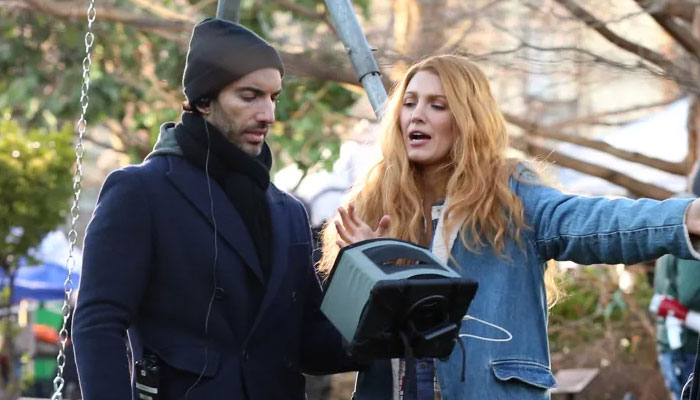Business
ESSAY: RUINS OF THE FUTURE
字号+ Author:Smart News Source:Business 2025-01-11 04:14:52 I want to comment(0)
Time is a funny thing — it immortalises some stories and buries others. For the sake of imagination, what comes to your mind when you think of Lahore? For me, it is underpasses, development and smog. For you, it may be Mughal history, food and shrines. Weather, economy and culture are definitely pressing topics. But even in our conversations on heritage, we mention the architecture that was preserved and rarely the marvels that have crumbled. Sadly, the ruins tend to go unnoticed. Ann Stoler, a septuagenarian professor of anthropology in New York, remarks that a ruin is both a noun as well as a verb. We can think of ruination as a socio-political project that causes deterioration of sites. At the same time, a ‘ruin’ is also what is left behind. They have served as muses for artists and poets; they are associated with loss and nostalgia. In Arabic poetry, the genre of wuquf ‘ala al-atlal, or ‘stopping by the ruins’, is a recurring theme. Even in Urdu literature, many see ruination as a quintessential lesson about the fragility of life. The ruins of an abandoned Hindu temple in Lahore’s Model Town serve as a reminder of what has been lost as well as possible futures… It brings to mind the verse of Ameer Minai, the 19th century Urdu poet from the Subcontinent: [How many renowned ones became traceless How the Earth swallowed up majestic skies] The same poem also commemorates houses that are empty of their residents and wonders: [Neither flowers, nor buds, nor shrubs, nor leaves remain How many glorious gardens fell prey to autumn] If you look closely, a ruin says that inescapable doom awaits all of us. Hauntology suggests that ruins not only symbolise a lost past; they also represent the futures that were possible. Talking about lost futures, the ruins of a Hindu temple in D-Block, Model Town, Lahore, stand out for me. Residents of Lahore usually associate D-Block with the famous Bhaiyya Kebab shop, but few know that the circular market still goes by the name ‘Mandir Market’ due to this abandoned temple. Rewind to a hundred years ago, when Model Town was constructed as a new, Indian ‘garden city’ for the indigenous elite, based on the work of Scottish architect Ebenezer Howard. In the initial plan by the architect Sir Ganga Ram in 1927, eight identical blocks were planned. Each block was to have one religious site, but only three of these were completed: a gurdwara [Sikh temple] in B-Block, a mosque in A-Block, and the D-Block mandir. Like other sites, this temple was the convergence point of D-Block, and the surrounding land was simply known to be the property of the temple till 1927. Afterwards, it fell into the hands of the Evacuee Trust Property Board, which gave up the rights to the Cooperative Model Town Society in 1962. The temple in Model Town is an example of the North Indian style of temple architecture, originally having an offering room. Sometime in the 1990s, likely in the wake of the razing of the Babri Masjid in India’s Ayodhya in 1992, the room was integrated into a nearby residence. The main part of the temple has now become part of a government girls’ high school. The temple’s plan initially included a single-room layout, with a central shrine and an outer walkway. It also has a marvellous spire. Fast forward to today, the structure is almost unrecognisable. The garbha griha [literally, womb chamber], where sacred idols were once placed, is now empty and worn down. The raised platform, or tharra, which would have allowed worshippers to circle around the shrine in prayer, is barely visible beneath a layer of debris and soil. This building no longer gets any visitors and nature has taken over its foundations. One of the residents, who is in his mid-thirties and spent his childhood playing in and around the abandoned temple, tells Eos that the blockage of rainwater at the top of the elevation supports the foliage. The only living sight inside the temple is a family of cats hidden in the rubble. The same resident also reports that the temple had a stone cap at the top, which was destroyed by rioters after the Babri Masjid incident. Two other residents share that during their growing up, the temple became a cricket ground for local children. Matches were held, tennis balls were lost and rumours spread. It is not uncommon to hear that the temple is haunted by spirits. The nature of these spirits remains a mystery. Some say they have seen a tall noorani buzurg [luminous elder] roaming the temple at night. Others say the inhabitants of the temple are harmless djinns. Perhaps, ghost stories are a way of making sense of the unknown, or perhaps there is some truth to them. Either way, this ruin evokes a feeling of isolation, neglect and abandonment. Jaques Derrida, a French philosopher, developed the theory of hauntology. Some of the features he identified among haunted places are that time becomes out of joint, where the past and future intrude on the present, making it almost absent; events are no longer chronological and the loop breaks. In the same vein, when you observe this temple’s ruins, the spatially distant appears close and actual lived history feels far away. For better or worse, it is through these ghost stories that the temple is remembered. On a material level, the crumbling walls pose a structural threat; residents worry that they could fall anytime. Sadly, the solution commonly proposed is not of preservation. During conversations with Eos, one person went as far as to say that the temple no longer has any utility. They suggested that this structure should be demolished before it falls. This sad approach negates the cultural and historical value of the city’s architecture. In a world where we grade objects based on their utility, ruins ask you to reconsider. It is also a good point to reflect whether ruins are naturally created or if they result from collective societal neglect. Although most of the temple has crumbled, the enduring spire is still visible from faraway, and the surrounding market will forever be the Mandir Market. Allowing such a structure to die would be severing our umbilical cord to a collective history. As we are pulled into the future, we must decide what to do with our past. Because, as I was saying earlier, time is a funny thing.
1.This site adheres to industry standards, and any reposted articles will clearly indicate the author and source;
 Related Articles
Related Articles-
پہلی ٹیسٹ: پاکستان کے 211 کے بعد جنوبی افریقہ کے تین کھلاڑی آؤٹ، مارکرام نے مزاحمت کی
2025-01-11 04:02
-
جنوبی کوریائی تفتیش کاروں نے صدر یون کی گرفتاری منسوخ کردی
2025-01-11 04:02
-
بھارت ٹرمپ انتظامیہ کے ساتھ بہت گہرا تعلق چاہتا ہے
2025-01-11 02:30
-
ویگاس ٹیسلا دھماکے کا ملزم امریکی فوجی کی حیثیت سے شناخت (Vegas Tesla blast suspect identified as US soldier)
2025-01-11 02:29
 User Reviews
User Reviews Recommended Reads
Recommended Reads Hot Information
Hot Information- آئی سی سی نے چیمپئنز ٹرافی 2025 کے میچوں اور گروپس کا اعلان کردیا
- ویگاس ٹیسلا دھماکے کا ملزم امریکی فوجی کی حیثیت سے شناخت (Vegas Tesla blast suspect identified as US soldier)
- ہش مالے کے کیس میں امریکی صدر کی افتتاحی تقریب سے پہلے نیویارک کے جج ترامپ کو سزا سنائیں گے۔
- ویگاس ٹیسلا دھماکے کا ملزم امریکی فوجی کی حیثیت سے شناخت (Vegas Tesla blast suspect identified as US soldier)
- بھارت کی چیمپئنز ٹرافی کی مانگ سے کرکٹ کی سالمیت کو نقصان پہنچا
- بھارت ٹرمپ انتظامیہ کے ساتھ بہت گہرا تعلق چاہتا ہے
- بھارت ٹرمپ انتظامیہ کے ساتھ بہت گہرا تعلق چاہتا ہے
- سارا شریف کے والد، جو قتل کے جرم میں مجرم قرار پائے ہیں، جیل میں حملے کا نشانہ بنے۔
- پہلے ٹیسٹ میچ میں جنوبی افریقہ نے پاکستان کو دو وکٹوں سے شکست دی۔
 Abont US
Abont US
Follow our WhatasApp account to stay updated with the latest exciting content













